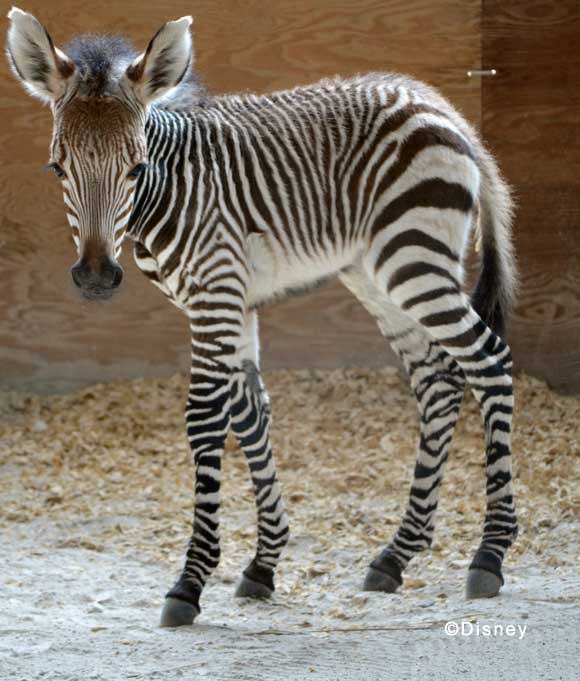- Disneyland
Disneyland Resort, Anaheim California
Disneyland Guide
Pictures
Columns & Reports
News/Events
- Walt Disney World
Walt Disney World, Orlando Florida
WDW Guide
Pictures
News/Events
- Features/News
- Columns
- Int. Parks
International Disney Parks
- About
|
|
Baby zebra adds its stripes to Disney’s Animal Kingdom Lodge savanna
LAKE BUENA VISTA, Fla., Nov. 1, 2013 – Sporting black and white stripes, there’s a new addition to the savanna at Disney’s Animal Kingdom Lodge. In October, the team welcomed a rare, baby Hartmann’s Mountain zebra. The filly and her mother are bonding well and doing fine after the yearlong gestation. Disney’s animal care team, including veterinarians carefully monitored the mother throughout her pregnancy. Typically found in mountainous regions of southwestern Africa, the species is characterized by a striking pattern of narrow vertical stripes covering its head and body. The species is considered endangered, with only 50 Hartmann’s mountain zebras in the United States and an estimated 7,000 throughout the world. Disney’s Animal Programs team is actively involved in the Association of Zoos and Aquariums Species Survival Plan for this critical species. The team is proud to have a successful birth of a rare species. The Hartmann’s mountain zebra is listed as vulnerable on the International Union for Conservation of Nature’s Red List of threatened species, which determines the risk of extinction to animals. The zebra’s endangerment continues due to experience of loss of habitat in their native Africa.
Just a few fun facts about zebras:
|
|
|
|
|
|
home
| disneyland
resort | walt
disney world | site map
| site index No part of this website may be reproduced in whole or in part without permission. disneygeek.com is not affiliated with The Walt Disney Company in any way. The official Disney site is available at www.disney.com All Disney parks, attractions, characters, titles, etc. are registered trademarks of The Walt Disney Company. This site provides independent news articles, commentary, editorials, reviews, and guides primarily about the theme parks of the Walt Disney Company.
|

